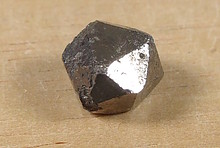Home PageAbout MindatThe Mindat ManualHistory of MindatCopyright StatusWho We AreContact UsAdvertise on Mindat
Donate to MindatCorporate SponsorshipSponsor a PageSponsored PagesMindat AdvertisersAdvertise on Mindat
Learning CenterWhat is a mineral?The most common minerals on earthInformation for EducatorsMindat ArticlesThe ElementsThe Rock H. Currier Digital LibraryGeologic Time
Minerals by PropertiesMinerals by ChemistryAdvanced Locality SearchRandom MineralRandom LocalitySearch by minIDLocalities Near MeSearch ArticlesSearch GlossaryMore Search Options
The Mindat ManualAdd a New PhotoRate PhotosLocality Edit ReportCoordinate Completion ReportAdd Glossary Item
Mining CompaniesStatisticsUsersMineral MuseumsClubs & OrganizationsMineral Shows & EventsThe Mindat DirectoryDevice SettingsThe Mineral Quiz
Photo SearchPhoto GalleriesSearch by ColorNew Photos TodayNew Photos YesterdayMembers' Photo GalleriesPast Photo of the Day GalleryPhotography
╳Discussions
💬 Home🔎 Search📅 LatestGroups
EducationOpen discussion area.Fakes & FraudsOpen discussion area.Field CollectingOpen discussion area.FossilsOpen discussion area.Gems and GemologyOpen discussion area.GeneralOpen discussion area.How to ContributeOpen discussion area.Identity HelpOpen discussion area.Improving Mindat.orgOpen discussion area.LocalitiesOpen discussion area.Lost and Stolen SpecimensOpen discussion area.MarketplaceOpen discussion area.MeteoritesOpen discussion area.Mindat ProductsOpen discussion area.Mineral ExchangesOpen discussion area.Mineral PhotographyOpen discussion area.Mineral ShowsOpen discussion area.Mineralogical ClassificationOpen discussion area.Mineralogy CourseOpen discussion area.MineralsOpen discussion area.Minerals and MuseumsOpen discussion area.PhotosOpen discussion area.Techniques for CollectorsOpen discussion area.The Rock H. Currier Digital LibraryOpen discussion area.UV MineralsOpen discussion area.Recent Images in Discussions
Mineralogical ClassificationSchlegelite: publication of the type-description
21st Dec 2006 10:03 UTCMarco E. Ciriotti Manager
• Krause, K., Bernhardt, H.-J., Effenberger, H. (2006): Schlegelite,
Bi7O4(MoO4)2(AsO4)3, a new mineral from Schneeberg, Saxony, Germany. European Journal of Mineralogy, 18, 803-811.
Abstract:
Schlegelite is a new bismuth molybdate arsenate from the dumps of the Pucher Richtschacht, near Schneeberg, Saxony, Germany. Associated minerals are quartz, petitjeanite, pucherite, bismuth and sillenite. Schlegelite forms dense spherical aggregates that are composed of small lath-like crystals up to 0.3 mm in length. Crystallographic forms are {010} (dominant), {001} and {100}; the elongation is parallel to <100>. The colour is yellow, the streak is pale yellow; Vickers hardness is VHN25 = 285 kg/mm2, corresponding to a Mohs' hardness of 31/2; good cleavage parallel to {010} and {001}. Schlegelite is biaxial negative, 2V = 40(5)°, nx = 2.22, ny = 2.255 (calc.), and nz = 2.26 (calculated from reflectance data); non-pleochroic; orientation X = a, Y = b, Z = c. Electron-microprobe analyses gave Bi2O3 70.20, PbO 0.48, CaO 0.05, P2O5 0.51, As2O5 15.38, V2O5 0.21, MoO3 12.13, total 98.96 wt.-%. The empirical formula based on 24 oxygen atoms is Bi6.78Pb0.05Ca0.02O3.51(MoO4)1.90(PO4)0.16(VO4)0.05(AsO4)3.01, the idealized formula is Bi7O4(MoO4)2(AsO4)3. Schlegelite is orthorhombic, space group Pnca, with a = 5.299(1), b = 16.133(4), c = 23.948(5) Å, V = 2047.2(7) Å 3 , Z = 4, Dcalc = 7.23 g/cm3. The crystal structure refinement converged for 2378 reflections and 166 variable parameters at R1 = 0.045. The atomic arrangement is characterized by ribbons of Bi atoms shortly linked by oxo-oxygen atoms parallel to <100>. The ribbons are connected to AsO4 and MoO4 tetrahedra forming layers parallel to (001). The chemical composition of schlegelite is remarkable as minerals containing both the anion groups, arsenate and molybdate, are rare; furthermore, Bi arsenates with a second anion group were found only occasionally. The mineral name is for Fritz Schlegel, a dedicated mineral collector and finder of the new species, in recognition of his contributions to the mineral assemblage of the Schneeberg area in Saxony, Germany.
21st Dec 2006 12:43 UTCPeter Haas




Mindat.org is an outreach project of the Hudson Institute of Mineralogy, a 501(c)(3) not-for-profit organization.
Copyright © mindat.org and the Hudson Institute of Mineralogy 1993-2024, except where stated. Most political location boundaries are © OpenStreetMap contributors. Mindat.org relies on the contributions of thousands of members and supporters. Founded in 2000 by Jolyon Ralph.
Privacy Policy - Terms & Conditions - Contact Us / DMCA issues - Report a bug/vulnerability Current server date and time: April 27, 2024 03:19:46
Copyright © mindat.org and the Hudson Institute of Mineralogy 1993-2024, except where stated. Most political location boundaries are © OpenStreetMap contributors. Mindat.org relies on the contributions of thousands of members and supporters. Founded in 2000 by Jolyon Ralph.
Privacy Policy - Terms & Conditions - Contact Us / DMCA issues - Report a bug/vulnerability Current server date and time: April 27, 2024 03:19:46











